Do Hydrangeas Like Banana Peels? Discover the Benefits
Do hydrangeas enjoy a banana peel treat? The simple answer is yes—banana peels can be beneficial for hydrangeas. These peels release essential nutrients like potassium, phosphorus, and calcium into the soil, which help nourish your plants.
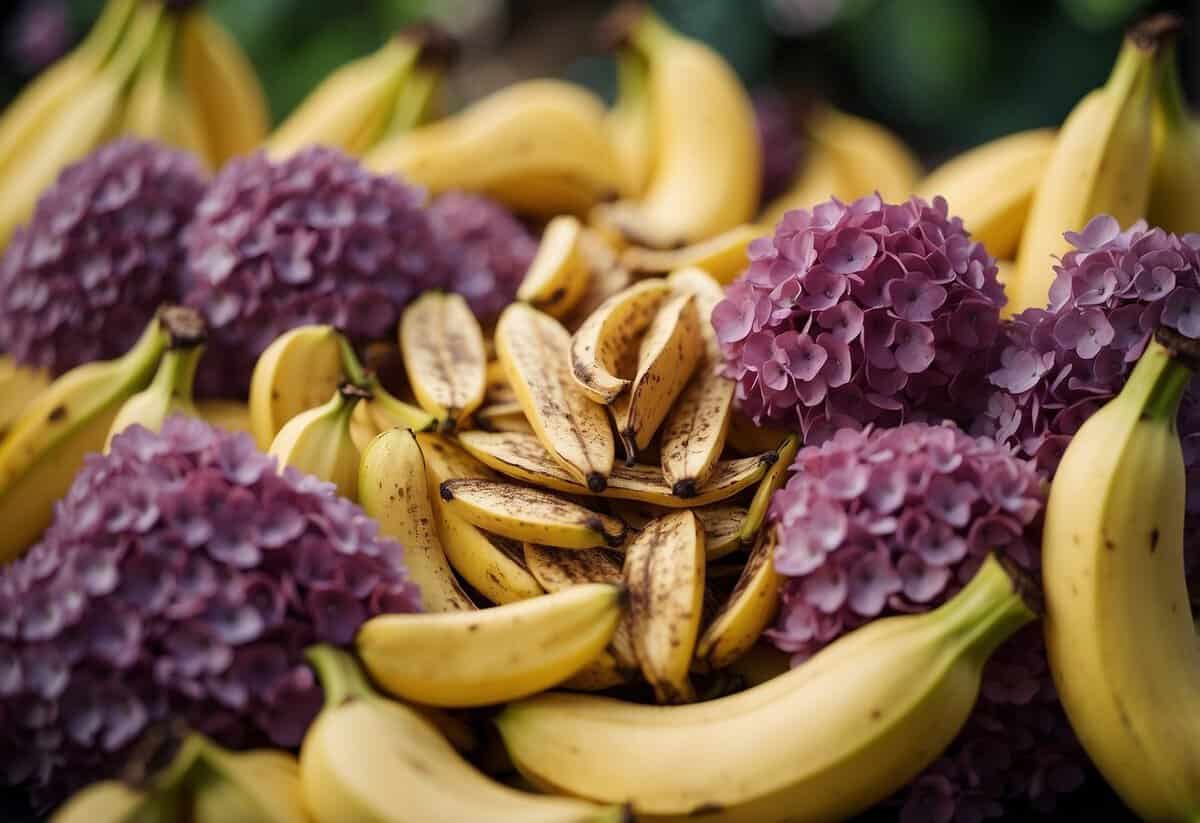
When you incorporate banana peels into your gardening routine, you use a natural and organic method to improve soil quality. Banana peels also enhance drainage and aeration around your hydrangeas, both critical for healthy root development.
It’s important to note that you should avoid burying fresh banana peels directly near your hydrangeas, as this might attract harmful bacteria. Instead, you can cut the peels into small pieces or soak them in water to create a nutrient-filled solution. This way, your hydrangeas get the benefits without any of the risks. Ready to give it a try?
Understanding Hydrangeas’ Nutritional Needs
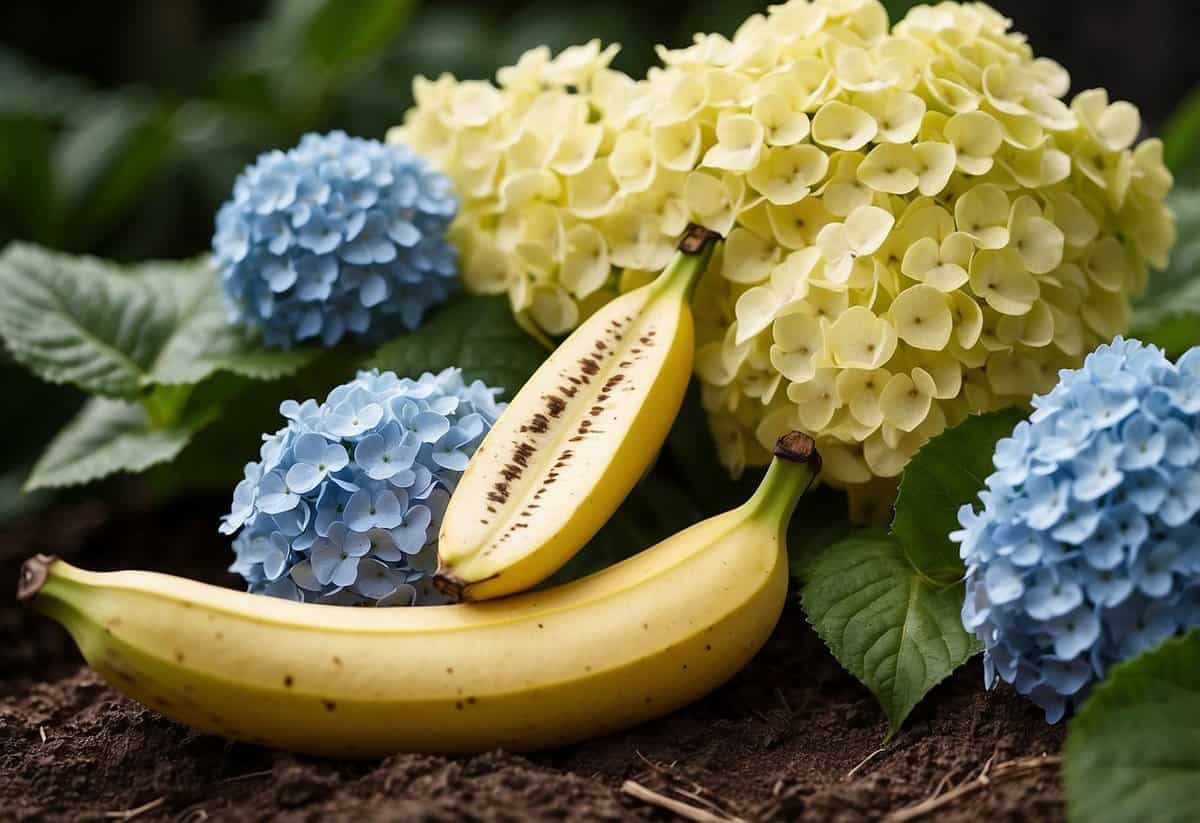
To keep your hydrangeas healthy and vibrant, it’s crucial to provide them with the right nutrients and maintain proper soil conditions.
Essential Macro and Micro-Nutrients
Hydrangeas need several key nutrients to grow well and produce beautiful blooms. Nitrogen helps with leaf growth, while phosphorus supports root development and flowering. Potassium plays a critical role in overall plant health and bloom quality.
In addition to these macronutrients, hydrangeas benefit from calcium and magnesium. Calcium strengthens cell walls, which can prevent diseases, and magnesium is essential for photosynthesis. By ensuring these nutrients are available, you can help your hydrangeas stay healthy throughout the growing season.
The Importance of Soil pH for Hydrangeas
Soil pH significantly impacts hydrangea bloom color and health. For example, acidic soil (pH 5.0-5.5) will produce blue blooms, while alkaline soil (pH 6.0-6.5) leads to pink blooms. Maintaining the right soil pH ensures that hydrangeas can absorb nutrients effectively.
If your soil pH isn’t ideal, you can adjust it. For more acidic soil, add sulfur or peat moss. To make the soil more alkaline, use lime. Regularly testing your soil pH and making adjustments as needed will keep your hydrangeas in top shape. This way, you can enjoy beautiful and vibrant flowers all season long.
Banana Peels as a Natural Fertilizer
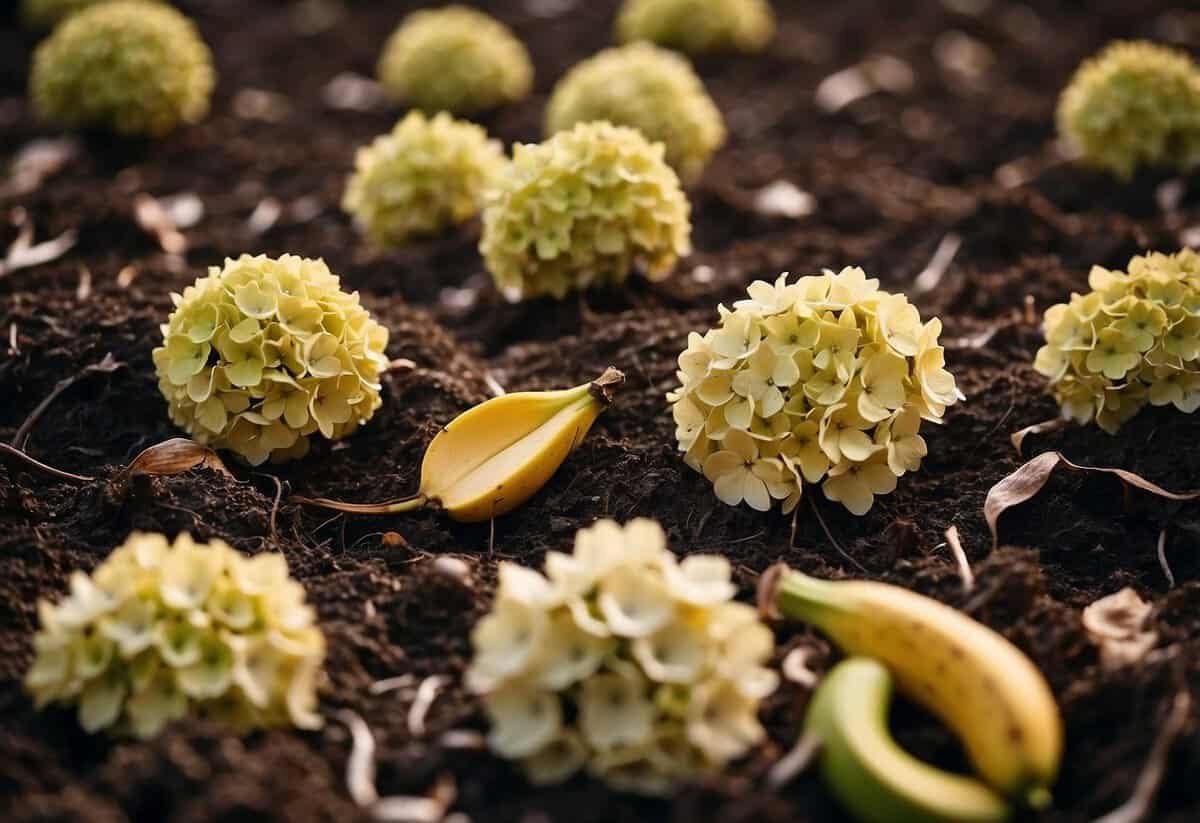
Using banana peels as fertilizer can greatly benefit your hydrangeas. Banana peels are rich in potassium, which is vital for plant health. Composting them can turn waste into nutrient-rich organic matter.
Banana Peels and Potassium
Banana peels are a notable source of potassium. Potassium helps hydrangeas have stronger stems and more vibrant blooms. When you add banana peels as a fertilizer, you supply the potassium that your hydrangeas need. Potassium also aids in the plant’s overall health, ensuring that your hydrangeas grow sturdy and beautiful.
To use banana peels, simply chop them up and bury them in the soil around your hydrangeas. This allows the nutrients to seep into the soil as the peels decompose, providing a steady source of potassium. Avoid soaking banana peels in water as it may not be as effective.
Composting Banana Peels
Composting banana peels can create a nutrient-rich compost that benefits your hydrangeas. Start by cutting the peels into small pieces, ideally no larger than half an inch. This helps the peels break down faster. You can add the chopped peels to your compost bin along with other organic matter such as leaves and kitchen scraps.
Make sure to turn your compost regularly to help with decomposition. The banana peels will break down, forming a rich, dark compost that you can use as a natural fertilizer for your hydrangeas. This compost improves soil structure, provides essential nutrients, and promotes healthy plant growth. Incorporating compost into your gardening routine ensures that your hydrangeas receive a balanced diet of organic materials.
Proper Application of Banana Peels for Hydrangeas
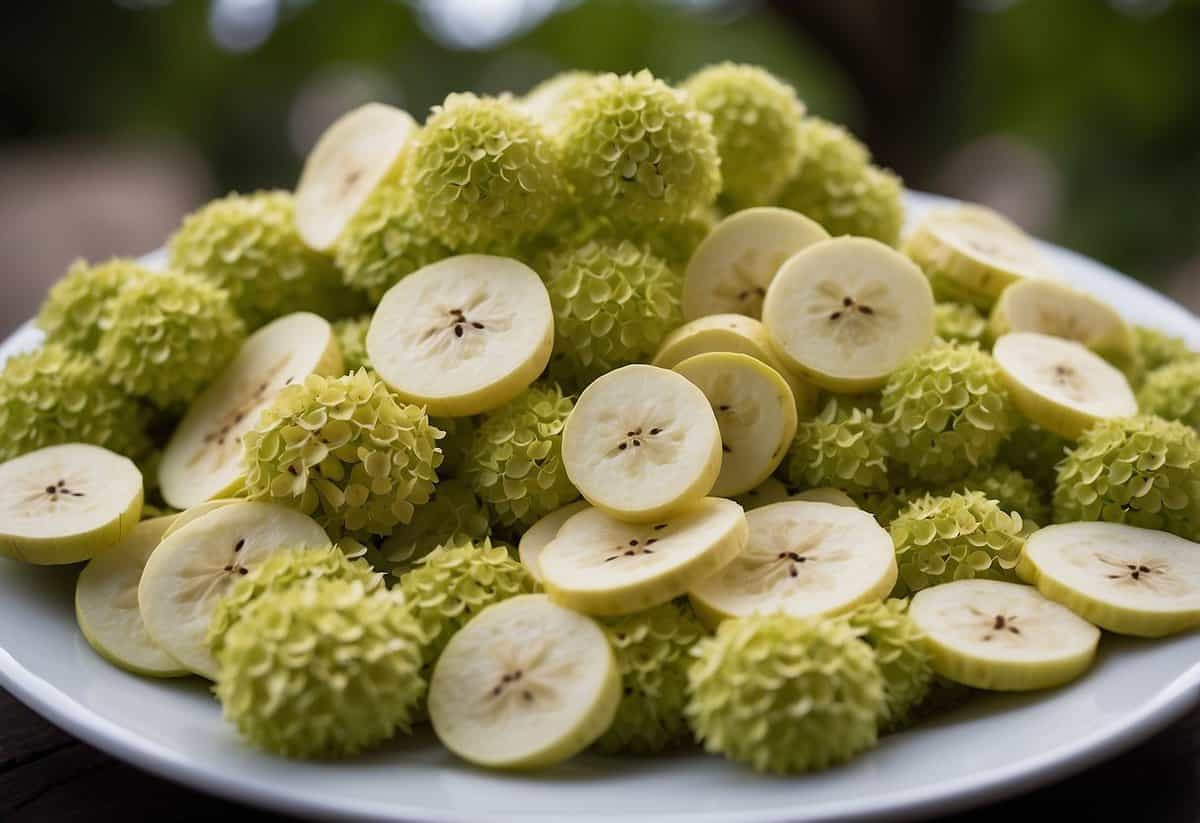
Using banana peels as fertilizer for hydrangeas can be beneficial if done properly. Key techniques include preparing the peels correctly and knowing when and how often to fertilize.
Preparing Banana Peel Fertilizer
To start, collect banana peels from organic bananas.
First, cut the peels into small pieces. You can use a food processor to speed this up.
Then, place the chopped peels in a large mason jar with a secure-fitting lid. Fill the jar with regular tap water to create a banana peel tea.
Alternatively, you can dry the peels before application. Lay them out in a sunny spot until they are completely dry.
Crushing the dried peels into powder makes them easier to spread around your hydrangeas.
Note: Avoid burying fresh banana peels directly around the plants as this can attract harmful bacteria and pests.
Timing and Frequency of Fertilization
Apply banana peel fertilizer in early spring when growth begins and repeat every 4-6 weeks during the growing season.
Hydrangeas benefit most from consistent fertilization but be careful not to overdo it.
Use banana peel tea as a liquid fertilizer by watering the base of your plants with it. Alternatively, sprinkle the dried peel powder around the soil and water thoroughly.
Maintaining a regular fertilization schedule helps your hydrangeas thrive and produces more blooms.
Additional Organic Fertilizers and Amendments
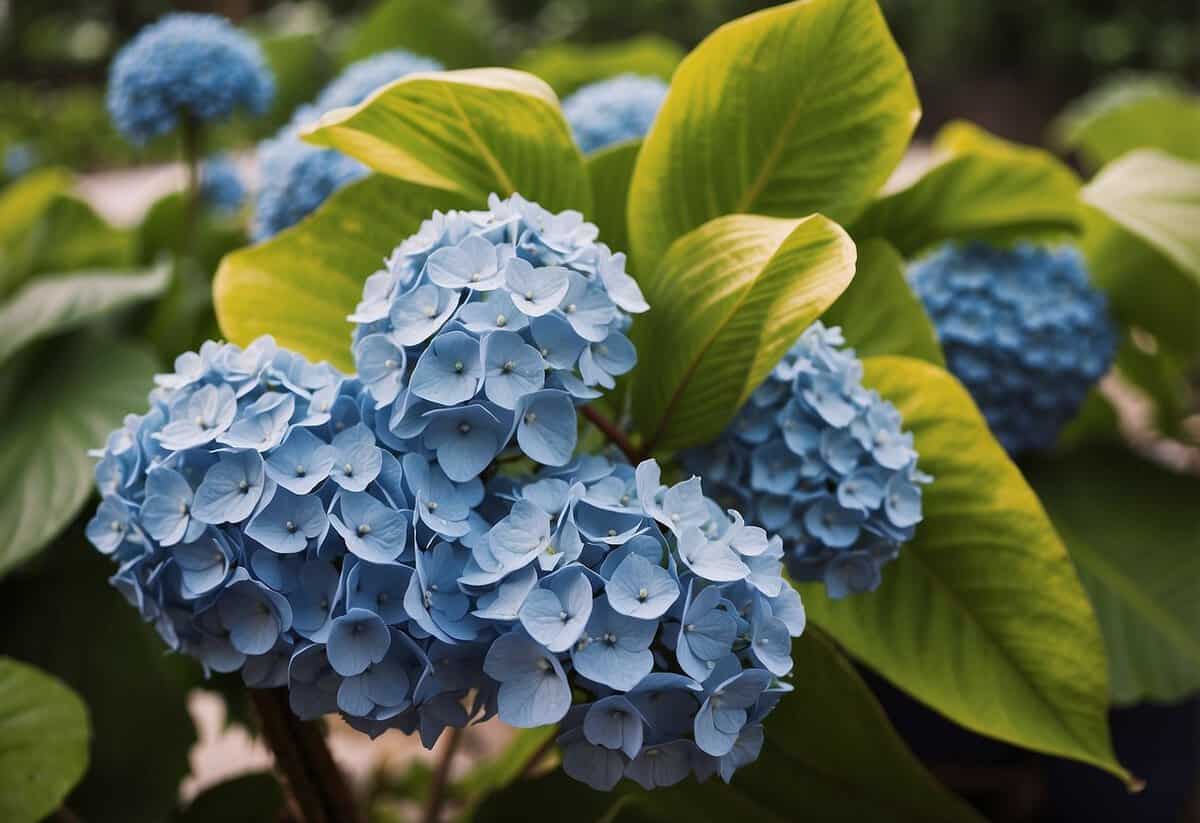
There are various organic materials that can benefit your hydrangeas beyond banana peels. Coffee grounds, eggshells, mulch, and compost are excellent choices to improve soil health and promote blooming.
Using Coffee Grounds and Eggshells
Coffee grounds are a great addition to your soil. They help improve soil structure, enhancing aeration and drainage. Coffee grounds can also add nitrogen, which is essential for plant growth. Spread used coffee grounds around the base of your hydrangeas. This creates a slow-release effect, providing nutrients over time.
Eggshells are another useful amendment. They add calcium to the soil, which is important for cell wall strength and overall plant health. Before adding eggshells to your soil, crush them into small pieces. This allows them to break down more quickly and release their nutrients faster. Consider combining coffee grounds and eggshells for a more comprehensive fertilizer.
Incorporating Mulch and Compost
Mulch is beneficial for many reasons. It helps retain moisture, keeps soil temperatures stable, and reduces weed growth. Organic mulch, such as bark chips or straw, also breaks down over time, enriching the soil. Apply a layer of mulch around your hydrangeas, making sure not to pile it up against the stems.
Compost is one of the best amendments for hydrangeas. It adds a variety of nutrients to the soil, improves soil structure, and supports beneficial microbial activity. You can make homemade compost using kitchen scraps like vegetable peelings, fruit scraps, and of course, banana peels. Spread a layer of compost around your hydrangeas annually. This will ensure a continuous supply of nutrients, promoting healthy, vigorous growth.
By using these organic materials, you can create a healthier environment for your hydrangeas, promoting lush blooms and strong plants.
Preventing Pests and Diseases in Hydrangeas
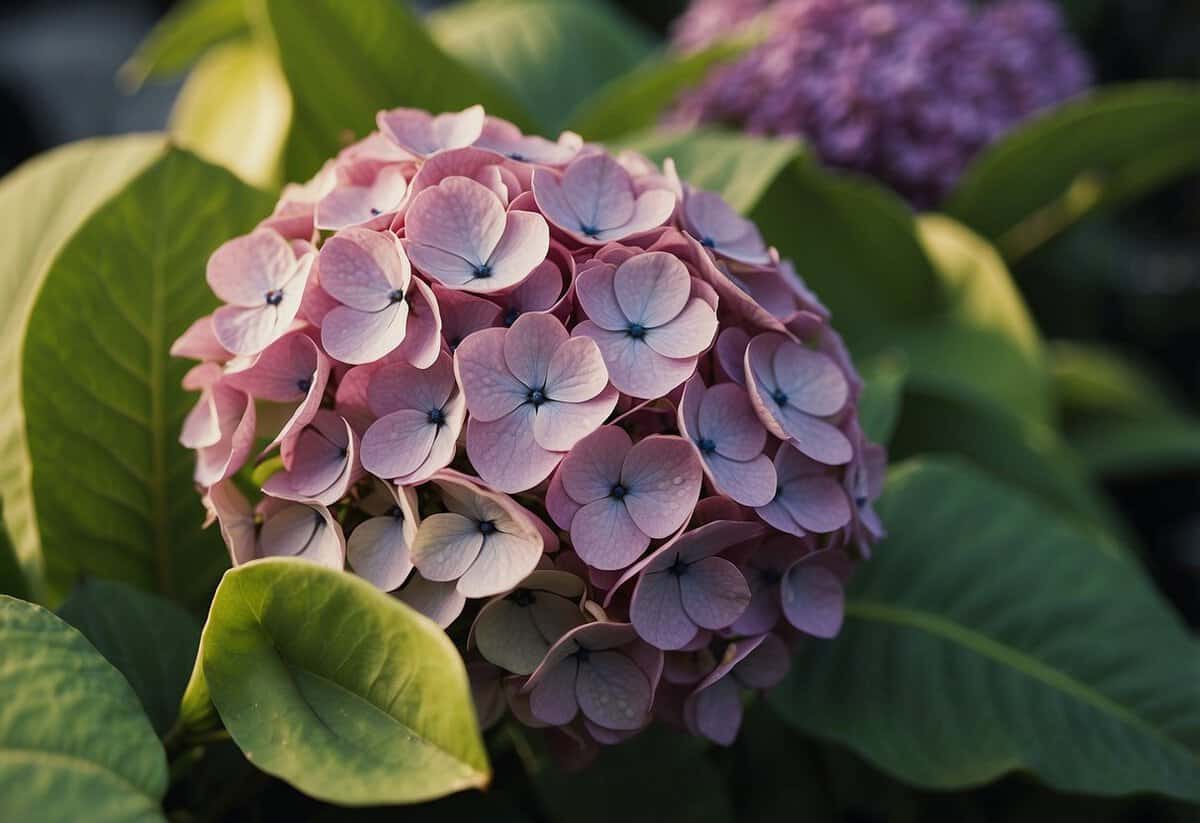
Taking steps to keep pests and diseases away from your hydrangeas helps them thrive. Using natural repellents and maintaining healthy growth conditions are effective ways to achieve this.
Natural Repellents and Pesticides
Using natural repellents can help keep pests like aphids off your hydrangeas. You can use a mixture of water and dish soap to spray on the leaves. This spray repels aphids and other small pests.
Neem oil is also a good choice. It is safe for the plants and repels a wide range of pests. You can buy neem oil in gardening stores.
For more persistent problems, try introducing beneficial insects. Ladybugs are known predators of aphids and can help keep their numbers down.
Garlic spray is another natural option. Crush a few garlic cloves and mix them with water. Let this mixture sit for 24 hours, then strain and spray on your hydrangeas. This method helps repel many common pests.
Maintaining Healthy Growth Conditions
Healthy plants are less likely to suffer from diseases. Make sure your hydrangeas are planted with enough space between them. This allows for good air circulation and prevents diseases like botrytis blight, which thrives in damp conditions.
Watering correctly is crucial. Always water at the base of the plant to avoid wetting the leaves. Overhead watering can lead to powdery mildew and other fungal infections.
Regularly inspect your plants for signs of disease. Look for spots, discoloration, or unusual growth. If you notice any problems, take action quickly to prevent the disease from spreading.
Using mulch around the base helps retain moisture and can protect the roots from temperature swings. Just make sure to keep the mulch a few inches away from the stem to prevent root rot.
By following these steps, you can keep your hydrangeas healthy and beautiful all season long.







